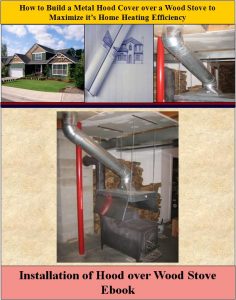Tips on Buying a Wood Stove for your Home
By Mark J. Donovan
|
|
Buying a wood stove can be a complicated process. To begin with, wood stoves come in a variety of shapes and sizes. So first on your checklist, before actually going out and buying a wood stove, is figuring out how much living space you plan on heating with it. Based on the square footage you plan to heat, you can then narrow down your search to appropriately sized wood stoves. Remember too, that you most likely are buying the wood stove for supplemental heat, so you do not necessarily need to buy a wood stove that could theoretically heat your entire home.
The second item you need to consider when buying a wood stove is where you plan to install it. |
If it is expected to be located in a main living space, you’ll want to purchase a wood stove that is both functional and attractive. If the wood stove is to be located in a basement then you may be able to go with a less ornate woodstove, but possibly a larger one. Also, you need to consider where wood will be stored and transported to the wood stove. The last thing you want to do is to install a wood stove in a finished living space that requires you walking across a large section of carpet or hardwood flooring to carry firewood to the wood stove.
Another consideration when buying a wood stove is your budget. Wood stoves can be purchased from as low as a few hundred dollars to several thousand dollars, depending on the size, style and assorted features that the particular wood stove offers. Wood stoves are available in cast iron, or 3/16 or ¼ inch rolled steel.
This translates into less wood that needs to be cut, split, dried, transported, and burned in the wood stove. Thus, an air-tight wood stove is preferable in every respect, except for price. But even the price is recouped after a few years by not having to burn as much wood.
There are a few other key features to think about when buying a wood stove. For example, how the wood is actually loaded into the stove is an important consideration. My preference is a front loading wood stove. Moreover, the size of the wood that can be loaded into the wood stove is another concern. The larger the pieces of wood that can be loaded into the stove, the less cutting and hauling of it that will be required. Also, if the stove is to be installed into a finished living space you may want to buy a wood stove with a glass front for aesthetics.
For information on Restoring Baseboard Heating Element Covers, see the Restoring Baseboard Heating Element Covers eBook from HomeAdditionPlus.com. The Restoring Baseboard Heating Element Covers Ebook provides easy to understand, step-by-step instructions, on how to restore Baseboard Heating Element Covers so that they look new again. Pictures are included for every key step in the process.
For information on how to maximize a wood stove’s heating efficiency, see HomeAdditionPlus.com’s Installation of Hood over Wood Stove eBook.
For information on how to clean a wood stove pipe, see HomeAdditionPlus.com’s How to Clean a Wood Stove Pipe eBook.
Related Information
Additional Heating and Cooling Resources from Amazon.com
 |
 |
Free Heating and Cooling Price Quotes with No Obligation!
Fill out our 3-5 minute quick and easy form, and receive a free price quote on heating & cooling from one of our pre-screened and licensed HVAC contractors. This process is free and there is no obligation to continue once you receive your heating & cooling price estimate.


